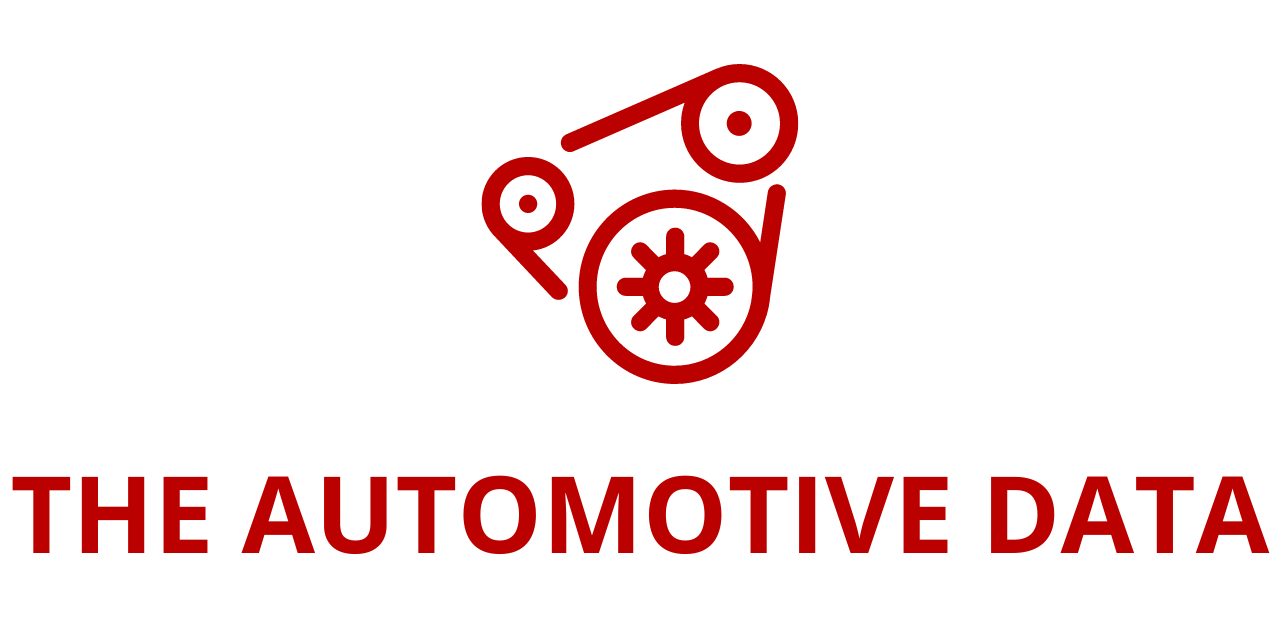
From Ignition Systems to Lunar Rovers, GM’s Innovation Hub Continues to Lead
Tucked into the northwest corner of General Motors’ Global Technical Center campus in Warren, Michigan is a building that has quietly shaped the future of mobility for more than a century: the Charles Kettering Research & Development (R&D) headquarters. Within its labs and offices, engineers, scientists, and technologists have repeatedly challenged the limits of what vehicles can do, producing breakthroughs that ripple far beyond the auto industry.
Kettering R&D is where transformative ideas move from whiteboards and prototypes into innovations that ultimately reach the road, the factory, and even outer space. Historically, this is the birthplace of technologies such as the first practical electrical ignition system—an advancement that fundamentally changed vehicle operation and safety. It also helped pioneer “robonauts” and Lunar Terrain Vehicle technologies developed in partnership with NASA, extending GM’s influence into space exploration and autonomous systems in extreme environments. These milestones underscore an enduring truth: R&D is more than a support function at GM; it is the company’s innovation engine.
That’s one reason why assuming the role of executive director of R&D at GM this year is both humbling and energizing. GM’s R&D organization is not just one of many in the industry; it is the longest-running automotive R&D department in the world, with a history that stretches back to 1920. For over 100 years, the team has blended deep scientific knowledge with real-world engineering, consistently pushing toward safer, more efficient, more sustainable, and more intelligent vehicles.
Today, R&D at GM functions as a catalyst in a much larger innovation ecosystem. The work inside Kettering headquarters is highly collaborative, crossing boundaries both within and beyond the company. Internally, R&D teams partner closely with engineering, software development, advanced manufacturing, industrial design, quality, safety, and other technical groups. Externally, they work with universities, national laboratories, start-ups, suppliers, and technology companies worldwide. This networked approach enables GM to tap into global expertise while staying tightly aligned to the company’s long-term product and technology vision.
At the heart of that vision is a clear mission: to identify, invent, and develop research that becomes products people love, paired with experiences they vividly remember, all while creating meaningful value for the company and its stakeholders. To translate that mission into action, GM R&D has structured its effortsaround eight strategic programs—focus areas that concentrate talent, funding, and partnerships on the technologies most critical to the company’s future.
1. Product Safety & Integration
Safety remains a non-negotiable priority across every aspect of vehicle development and deployment. Within R&D, the Product Safety & Integration program focuses on predicting, preventing, and mitigating safety risks across the entire vehicle lifecycle. This involves advanced simulations, data-driven safety analytics, and new methods for integrating hardware and software safety systems.
From crashworthiness and structural integrity to electronic system reliability and autonomous driving safety logic, this program seeks not only to respond to known risks but also to anticipate emerging ones. It leverages predictive modeling, sensor fusion, and machine learning to detect potential issues earlier, enabling proactive design changes rather than reactive fixes.
2. Connected Immersive Experience
Modern vehicles are evolving into intelligent, connected digital platforms. The Connected Immersive Experience program explores how to transform the interior of GM vehicles into adaptive, responsive environments that personalize the drive for each occupant. This includes research into human–machine interfaces, in-cabin sensing, intelligent infotainment, audio and visual systems, and seamless connectivity with devices and cloud services.
The goal is to move beyond traditional dashboards and static UX into cabins that can learn from driver preferences, respond contextually to conditions, and support new forms of engagement—from productivity and entertainment to wellness and safety. This work touches everything from voice assistants and AI-based personalization to augmented reality displays and advanced sensor arrays that better understand the state of occupants and the vehicle.
3. Advanced Batteries
As GM accelerates its transition to electric and electrified vehicles, battery research has become one of the most strategically important domains of R&D. The Advanced Batteries program targets next-generation propulsion and energy storage solutions that are safer, more energy-dense, faster to charge, longer-lasting, and more cost-effective.
This includes work on electrode materials, solid-state architectures, new electrolytes, cell designs, and advanced manufacturing techniques. Researchers are exploring how to balance performance, durability, and affordability, aiming to unlock EVs that meet a wide spectrum of customer needs—from performance enthusiasts and commercial fleets to everyday commuters.
4. Extreme Vehicle Efficiency
Even as the global fleet transitions toward electrification, efficiency remains crucial across all propulsion systems. The Extreme Vehicle Efficiency program is designed to deliver transformative improvements in internal combustion engines, hybrid powertrains, and full battery-electric platforms.
In practice, this means innovations spanning combustion optimization, friction reduction, lightweighting, aerodynamics, thermal management, and integrated powertrain control strategies. The program looks at the vehicle as a whole system, seeking synergies between hardware, software, and controls to achieve measurable gains in fuel economy, range, and performance.
5. Engineering & Computational Acceleration
Developing a modern vehicle is an enormously complex challenge involving millions of parts, lines of code, and design decisions. The Engineering & Computational Acceleration program aims to transform the way GM engineers design and validate vehicles by deploying AI, high-performance computing, and advanced simulation.
This program focuses on digital transformation in engineering processes—using AI to help explore vast design spaces, optimizing structures and systems, and dramatically shortening development cycles. It includes physics-based modeling, digital twins, virtual testing environments, and automated design workflows that allow teams to iterate quickly while maintaining rigor in safety and quality.
6. Robotics
Robotics has long played a role in automotive manufacturing, but the field is evolving well beyond static, caged robots performing repetitive tasks. The Robotics program at GM investigates advanced robotic systems and collaborative robots (cobots) that can safely work alongside people on the production line and in other settings.
These systems can improve manufacturing quality and consistency, enhance worker safety by taking on hazardous or strenuous tasks, and increase flexibility in how plants run. Beyond the factory, robotics research also supports automated driving systems, vehicle service and diagnostics, and special-purpose robotic platforms for extreme environments—building on GM’s experience with space robotics and “robonauts.”
7. Future Factory
A company’s ability to innovate depends not only on what it designs but also on how it builds. The Future Factory program is focused on industry 4.0 and emerging manufacturing technologies that enable faster, more flexible, and more resource-efficient production.
This includes research into advanced automation, digital thread and digital twin concepts, data-driven quality control, new material processing techniques, modular assembly systems, and tools that empower GM’s workforce to solve problems on the shop floor. The goal is to make manufacturing an engine of innovation in its own right, not just the final step in the chain.
8. Federal Systems Research
GM’s R&D work extends beyond commercial vehicles into specialized applications for defense and space. The Federal Systems Research program coordinates how GM technologies—from electrified propulsion and autonomous systems to materials and manufacturing methods—can be adapted and applied to federal, defense, and aerospace needs.
This program builds on the company’s long-standing collaboration with government agencies and national laboratories, including work on lunar mobility and advanced robotics. It not only expands GM’s technology portfolio but also helps validate and harden innovations under some of the most demanding conditions imaginable.
All eight strategic programs are not abstract frameworks; they are actively shaping projects that are already delivering tangible results. One powerful proof point is GM R&D’s recent performance at the R&D 100 Awards—often described as “The Oscars of Innovation.” These awards recognize significant scientific and technological advances that are poised to make a real-world impact. As 2025 wraps up and GM looks ahead to 2026, the R&D organization has earned four R&D 100 Awards for technologies that span simulation, propulsion, and advanced energy storage.
Below is an overview of the award-winning innovations and why they matter.
DR-Weld – High-Performance Digital Reality Simulation Tool
The first recognized technology, DR-Weld, is a high-performance digital reality simulation tool led by Oak Ridge National Laboratory and co-developed by GM and other partners. Welding and additive manufacturing are essential processes across automotive and many other industries, but they are complex, highly nonlinear, and computationally intensive to model accurately.
Traditional commercial software can require weeks or even months to run detailed simulations of welding operations or additive manufacturing builds. That time lag makes it difficult for engineers to use simulation as a day-to-day design tool and limits the ability to explore alternative geometries, process parameters, or materials.
DR-Weld changes that equation. By leveraging advanced numerical methods, high-performance computing, and algorithmic optimizations, it can simulate welding and additive manufacturing thousands of times faster than conventional tools. Scenarios that once took months can now be analyzed in days.
For GM, this speed unlocks new possibilities. Engineers can evaluate a wider range of designs early in development, identify potential defects before physical trials, and fine-tune processes for strength, distortion control, and efficiency. The tool’s capabilities also translate well beyond automotive, supporting aerospace, energy, and industrial sectors that rely on high-integrity welds and complex additively manufactured components. In short, DR-Weld is not simply about faster simulation—it’s about enabling better, more manufacturable designs at lower cost and with less trial-and-error.
Extreme Fast Charging and Affordable Cell for Electric Vehicles
The second R&D 100 Award highlights a breakthrough in battery cell architecture: an extreme fast-charging, cost-conscious cell designed to transform EV usability and affordability. One of the most common concerns among potential EV buyers is charging time. Long charge durations can limit convenience and, in some cases, acceptance of electric vehicles as primary transportation.
This battery initiative focuses on a cell design that supports ultra-fast charging while maintaining durability and cost competitiveness. The architecture optimizes materials, electrode design, and internal cell layout to manage heat, minimize degradation, and maintain safety under high charging rates.
GM has already deployed this technology in certain racing platform low-voltage batteries. Motorsports provide a demanding proving ground, subjecting components to intense power cycles, thermal stress, and performance expectations. The success of these cells in such environments is encouraging and helps inform future applications.
While additional research and validation are ongoing, the potential is clear: if such fast-charging, affordable cells can be scaled and integrated into mainstream EV platforms, they could significantly reduce charging times, broaden EV appeal, and support GM’s strategic push toward a more electric future.
Low Mass and High Efficiency Medium-Duty Truck Engine
The third award-winning technology shows that internal combustion engines still have room for meaningful innovation, especially in segments where electrification is still developing, such as medium-duty trucks. This project, led by GM and co-developed with partners in research labs, academia, and manufacturing, produced a prototype V8 engine that is both lighter and more efficient than conventional designs.
The engine achieves a roughly 15% reduction in weight while delivering more than a 10% improvement in fuel efficiency. Achieving both weight reduction and higher efficiency simultaneously is no small feat; typically, gains in one area can compromise the other. The project tackled this by rethinking materials, optimizing combustion, refining component design, and employing advanced simulation and testing.
To validate performance and durability, the engine underwent rigorous testing on dynamometers under extreme operating conditions. These tests are designed to expose weaknesses early, from thermal stresses and high-load cycles to long-duration operation. Passing such tests signals that the engine isn’t just theoretically better—it is robust enough to handle real-world duty cycles.
For customers, the implications are straightforward: lower fuel consumption, potentially higher payload capacity due to reduced engine weight, and lower operating costs over the vehicle’s lifetime. For GM, this technology extends the relevance of combustion-based platforms while electrification infrastructure and use cases continue to evolve.
Ultra-Robust Silicon All-Solid-State Battery
The fourth R&D 100 Award recognizes one of the most ambitious areas in energy storage: combining silicon-based anodes with all-solid-state battery architectures. Both of these technology directions are considered highly promising on their own—silicon for its potential to significantly increase energy density, and solid-state for its safety and stability advantages over traditional liquid electrolyte systems.
However, integrating the two presents substantial technical challenges, including managing volume changes, interfacial stability, and cycle life. GM’s ultra-robust silicon all-solid-state battery project addresses these hurdles by carefully engineering materials, interfaces, and cell structures to work together effectively.
Early tests indicate that the technology can deliver industry-leading cycle life and safety performance. While much work remains to move from research-scale prototypes to full-scale production, the breakthrough suggests a pathway toward batteries that can store more energy per unit volume and weight, charge efficiently, and operate with enhanced safety margins.
If successfully industrialized, such batteries could power EVs with significantly longer range, smaller and lighter packs, and robust performance under a wide range of conditions—further enhancing the attractiveness of electric mobility.
Beyond the R&D 100 Awards, 2025 has been a year of broader recognition for GM R&D and its partners. The organization’s work has earned a variety of additional honors, reflecting excellence not only in technology invention but also in manufacturing leadership, collaboration, and materials innovation. Among the noteworthy recognitions:
- A National Association of Manufacturers (NAM) Manufacturing Leadership Award, spotlighting GM’s advancement of manufacturing practices and innovation on the factory floor.
- The Society of Automotive Engineers (SAE) Forest McFarland Award, recognizing exceptional contributions to SAE’s technical committees and the advancement of engineering knowledge across the industry.
- Three U.S. Department of Energy “Distinguished Achievement Team” Awards, highlighting successful collaborative efforts on high-impact research and development projects.
- The Society of Manufacturing Engineers (SME) S.M. Wu Research Award, honoring outstanding research that advances the science and practice of manufacturing.
- The Society of Plastics Engineering Material Innovation Award, acknowledging breakthroughs in polymer and composite technologies that enable lighter, stronger, and more sustainable components.
- The International Magnesium Science and Technology Summit Innovative Product of the Year Award, underscoring GM’s leadership in lightweight materials and their application in automotive structures and components.
Taken together, these honors show that GM’s innovation engine is firing on all cylinders—across batteries and combustion, software and simulation, robotics and manufacturing, materials and mobility systems.
As 2025 draws to a close, the legacy of innovation that began over a century ago at Kettering R&D is not merely being celebrated; it is actively being extended. The four R&D 100 Awards are more than trophies. They represent proof points that GM’s strategic programs are delivering tangible, high-value technologies that will shape vehicles, factories, and mobility ecosystems in the years ahead.
With a clear roadmap, an ecosystem of partners, and a track record of converting breakthrough ideas into real-world solutions, GM R&D is well positioned to propel the company into 2026 and beyond. From advanced batteries and ultra-fast charging to high-efficiency engines, digital manufacturing tools, and robust solid-state energy storage, the work underway today is laying the foundation for the next generation of vehicles and experiences.
Guided by a mission to deliver products people crave and experiences they never forget, GM R&D—and the broader GM organization it supports—will continue to push the boundaries of what is possible, shaping a safer, smarter, more sustainable future of mobility.
Source Link:https://news.gm.com/







